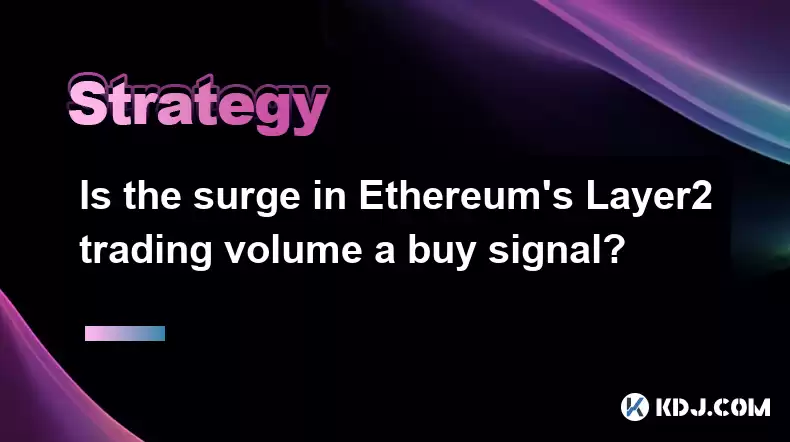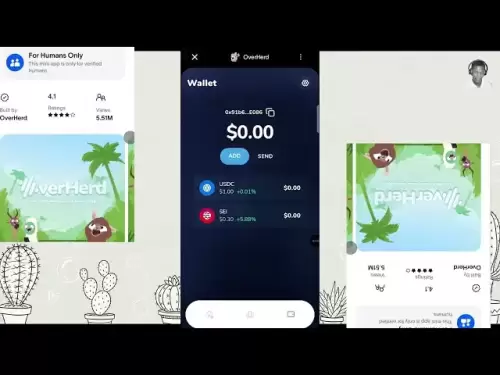-
 Bitcoin
Bitcoin $113600
-0.65% -
 Ethereum
Ethereum $3582
-2.02% -
 XRP
XRP $2.919
-4.02% -
 Tether USDt
Tether USDt $0.9999
-0.01% -
 BNB
BNB $749.8
-1.55% -
 Solana
Solana $162.1
-3.54% -
 USDC
USDC $0.9998
-0.01% -
 TRON
TRON $0.3318
-0.59% -
 Dogecoin
Dogecoin $0.1967
-4.77% -
 Cardano
Cardano $0.7148
-4.36% -
 Hyperliquid
Hyperliquid $37.30
-3.29% -
 Stellar
Stellar $0.3883
-4.29% -
 Sui
Sui $3.357
-4.00% -
 Bitcoin Cash
Bitcoin Cash $556.3
-1.84% -
 Chainlink
Chainlink $16.11
-4.08% -
 Hedera
Hedera $0.2344
-4.30% -
 Ethena USDe
Ethena USDe $1.001
0.00% -
 Avalanche
Avalanche $21.68
-4.66% -
 Litecoin
Litecoin $118.0
-3.37% -
 UNUS SED LEO
UNUS SED LEO $9.000
0.53% -
 Toncoin
Toncoin $3.161
-6.14% -
 Shiba Inu
Shiba Inu $0.00001193
-3.33% -
 Uniswap
Uniswap $9.434
-3.85% -
 Polkadot
Polkadot $3.577
-2.49% -
 Dai
Dai $0.9999
0.00% -
 Monero
Monero $288.7
-3.86% -
 Bitget Token
Bitget Token $4.209
-3.61% -
 Cronos
Cronos $0.1368
-1.06% -
 Pepe
Pepe $0.00001003
-4.60% -
 Aave
Aave $252.2
-3.73%
Is the surge in Ethereum's Layer2 trading volume a buy signal?
The surge in Ethereum's Layer2 trading volume signals increased ecosystem activity, potentially boosting Ethereum's price, but investors should consider broader market factors before buying.
Apr 23, 2025 at 07:29 am

The recent surge in Ethereum's Layer2 trading volume has sparked significant interest among cryptocurrency enthusiasts and investors. Many are wondering whether this increase in activity is a reliable indicator that it's time to buy Ethereum. To understand this phenomenon, we need to delve into what Layer2 solutions are, why their trading volumes are increasing, and how this might influence Ethereum's market performance.
What are Ethereum's Layer2 Solutions?
Layer2 solutions are protocols built on top of the Ethereum blockchain to improve its scalability and efficiency. These solutions aim to address the issues of high transaction fees and slow processing times that have plagued Ethereum, especially during periods of high network congestion. Examples of Layer2 solutions include Optimistic Rollups, zk-Rollups, and sidechains like Polygon.
Layer2 solutions work by processing transactions off the main Ethereum chain and then settling them back on the blockchain in batches. This approach significantly reduces the load on the Ethereum network, allowing for faster and cheaper transactions. As a result, these solutions have become increasingly popular among users and developers looking to build decentralized applications (dApps) on Ethereum.
The Surge in Layer2 Trading Volume
The trading volume on Ethereum's Layer2 solutions has seen a notable increase in recent months. This surge can be attributed to several factors. Firstly, the growing adoption of decentralized finance (DeFi) and non-fungible tokens (NFTs) has driven demand for more efficient and cost-effective transaction processing. Layer2 solutions have emerged as a viable alternative to the main Ethereum chain, attracting users who are looking to save on gas fees.
Secondly, the development and improvement of Layer2 technologies have made them more user-friendly and accessible. Projects like Arbitrum and Optimism have gained traction, offering seamless integration with existing Ethereum infrastructure. This has encouraged more users to migrate their activities to Layer2, further boosting trading volumes.
Lastly, the anticipation of Ethereum's upcoming upgrades, such as Ethereum 2.0, has also played a role. Investors and users are positioning themselves to take advantage of the expected improvements in Ethereum's scalability and performance, and Layer2 solutions are seen as a bridge to these future enhancements.
Is the Surge in Layer2 Trading Volume a Buy Signal for Ethereum?
The increase in Layer2 trading volume can be interpreted as a positive signal for Ethereum's overall health and growth. Higher trading volumes on Layer2 solutions indicate increased activity and engagement within the Ethereum ecosystem. This can be seen as a vote of confidence in Ethereum's long-term potential, as users and developers are actively seeking ways to improve and expand its capabilities.
However, it's important to approach this signal with caution. While the surge in Layer2 trading volume is a positive development, it is just one of many factors that investors should consider when deciding whether to buy Ethereum. Other factors, such as market sentiment, regulatory developments, and broader economic conditions, also play a crucial role in determining Ethereum's price trajectory.
Analyzing the Impact on Ethereum's Price
To understand the potential impact of the surge in Layer2 trading volume on Ethereum's price, we need to look at historical data and market trends. Historically, increased activity and adoption within the Ethereum ecosystem have been associated with upward price movements. For instance, the DeFi boom in 2020 and the NFT craze in 2021 both led to significant increases in Ethereum's price.
The current surge in Layer2 trading volume could be seen as a similar catalyst. As more users and developers flock to Layer2 solutions, the demand for Ethereum itself may increase. This is because many Layer2 solutions still require users to hold Ethereum to participate in their ecosystems. Additionally, the success of Layer2 solutions can enhance Ethereum's reputation as a leading blockchain platform, attracting more investment and driving up its price.
Risks and Considerations
While the surge in Layer2 trading volume is a promising development, there are also risks and considerations that investors should be aware of. One potential risk is the possibility of Layer2 solutions becoming too fragmented. If different Layer2 solutions do not interoperate effectively, it could lead to a disjointed user experience and hinder overall adoption.
Another consideration is the regulatory landscape. As Layer2 solutions gain popularity, they may attract increased scrutiny from regulators. Any adverse regulatory developments could impact the growth and adoption of these solutions, which in turn could affect Ethereum's price.
Additionally, the success of Layer2 solutions is closely tied to the success of Ethereum itself. If Ethereum faces technical issues or fails to deliver on its promised upgrades, it could undermine the confidence in Layer2 solutions and negatively impact Ethereum's price.
How to Monitor Layer2 Trading Volume
For investors looking to make informed decisions based on Layer2 trading volume, it's important to know how to monitor these metrics. Here are some steps to follow:
- Choose a reliable data source: Websites like Dune Analytics and L2Beat provide comprehensive data on Layer2 trading volumes. These platforms aggregate data from various Layer2 solutions, allowing you to track trends and changes over time.
- Set up alerts: Many data platforms offer the ability to set up custom alerts for specific metrics. By setting alerts for Layer2 trading volume, you can stay informed about significant changes without having to constantly monitor the data.
- Analyze trends: Look for patterns and trends in the data. For example, are certain Layer2 solutions seeing more growth than others? Are there specific times of the day or week when trading volumes spike? Understanding these trends can help you make more informed investment decisions.
- Compare with Ethereum's price: It's also useful to compare Layer2 trading volume with Ethereum's price movements. Are increases in Layer2 trading volume correlated with price increases? This can help you gauge the potential impact of Layer2 activity on Ethereum's price.
Frequently Asked Questions
Q: Can Layer2 solutions operate independently of Ethereum?
A: While Layer2 solutions are built on top of the Ethereum blockchain, some of them, like sidechains, can operate with a degree of independence. However, they still rely on Ethereum for security and finality, meaning they are not completely independent.
Q: How do Layer2 solutions affect Ethereum's gas fees?
A: Layer2 solutions can significantly reduce Ethereum's gas fees by processing transactions off the main chain. This reduces the load on the Ethereum network, leading to lower fees for users who utilize Layer2 solutions.
Q: Are there any risks associated with using Layer2 solutions?
A: Yes, there are risks associated with using Layer2 solutions. These include potential security vulnerabilities, the risk of fragmentation, and the possibility of regulatory challenges. It's important for users to research and understand these risks before engaging with Layer2 solutions.
Q: How can I participate in Layer2 solutions?
A: To participate in Layer2 solutions, you typically need to bridge your Ethereum to the specific Layer2 network you want to use. This can usually be done through a bridge provided by the Layer2 solution. Once your assets are on the Layer2 network, you can interact with dApps and conduct transactions as you would on the main Ethereum chain.
Disclaimer:info@kdj.com
The information provided is not trading advice. kdj.com does not assume any responsibility for any investments made based on the information provided in this article. Cryptocurrencies are highly volatile and it is highly recommended that you invest with caution after thorough research!
If you believe that the content used on this website infringes your copyright, please contact us immediately (info@kdj.com) and we will delete it promptly.
- DeriW Mainnet: Zero Gas Fees Revolutionize On-Chain Derivatives Trading
- 2025-08-06 10:30:11
- IOTA, Cloud Mining, and Eco-Friendly Crypto: A New York Investor's Take
- 2025-08-06 10:30:11
- Kaspa (KAS) Price Prediction: August 6 - Will It Break Free?
- 2025-08-06 10:50:12
- Meme Coin Mania: Arctic Pablo's Token Burn Ignites Presale Frenzy
- 2025-08-06 10:50:12
- Pi Network, Holders, and Market Turbulence: Navigating the Crypto Storm
- 2025-08-06 10:55:12
- XRP, DOGE, and the Altcoin Darling Dilemma: Where's the Alpha?
- 2025-08-06 08:30:11
Related knowledge

How to avoid common crypto investment mistakes?
Jul 13,2025 at 01:35am
Understanding the Risks of Crypto InvestmentInvesting in cryptocurrency can be highly rewarding, but it also comes with significant risks. One of the ...

What is a long-short crypto strategy?
Jul 15,2025 at 10:56am
Understanding the Basics of a Long-Short Crypto StrategyA long-short crypto strategy is an investment approach where traders simultaneously take long ...

What is a long-short crypto strategy?
Jul 11,2025 at 01:28pm
Understanding the Basics of Long-Short Crypto StrategyA long-short crypto strategy is an investment approach where traders take both long and short po...

How to use the RSI indicator for crypto?
Jul 12,2025 at 03:56pm
Understanding the RSI Indicator in Cryptocurrency TradingThe Relative Strength Index (RSI) is a momentum oscillator used to measure the speed and chan...

Is copy trading a good strategy for crypto beginners?
Jul 12,2025 at 08:28am
Understanding Copy Trading in the Cryptocurrency MarketCopy trading is a strategy where novice traders replicate the trades of experienced investors a...

How to build a crypto portfolio with $1000?
Jul 13,2025 at 08:14pm
Understanding the Basics of Cryptocurrency InvestmentBuilding a crypto portfolio with $1000 starts with understanding the fundamentals of cryptocurren...

How to avoid common crypto investment mistakes?
Jul 13,2025 at 01:35am
Understanding the Risks of Crypto InvestmentInvesting in cryptocurrency can be highly rewarding, but it also comes with significant risks. One of the ...

What is a long-short crypto strategy?
Jul 15,2025 at 10:56am
Understanding the Basics of a Long-Short Crypto StrategyA long-short crypto strategy is an investment approach where traders simultaneously take long ...

What is a long-short crypto strategy?
Jul 11,2025 at 01:28pm
Understanding the Basics of Long-Short Crypto StrategyA long-short crypto strategy is an investment approach where traders take both long and short po...

How to use the RSI indicator for crypto?
Jul 12,2025 at 03:56pm
Understanding the RSI Indicator in Cryptocurrency TradingThe Relative Strength Index (RSI) is a momentum oscillator used to measure the speed and chan...

Is copy trading a good strategy for crypto beginners?
Jul 12,2025 at 08:28am
Understanding Copy Trading in the Cryptocurrency MarketCopy trading is a strategy where novice traders replicate the trades of experienced investors a...

How to build a crypto portfolio with $1000?
Jul 13,2025 at 08:14pm
Understanding the Basics of Cryptocurrency InvestmentBuilding a crypto portfolio with $1000 starts with understanding the fundamentals of cryptocurren...
See all articles

























































































